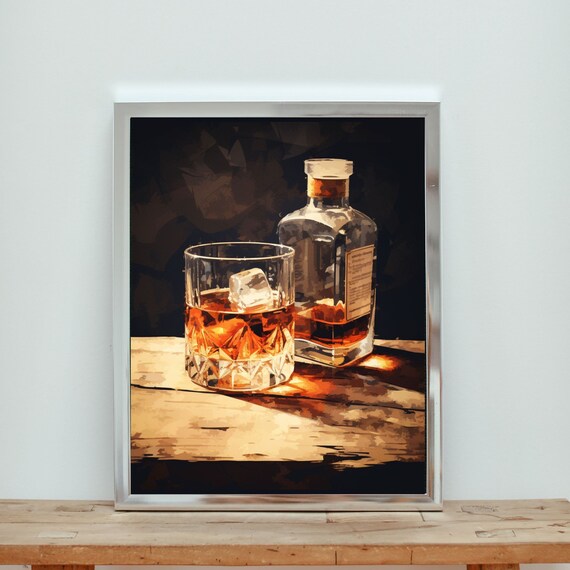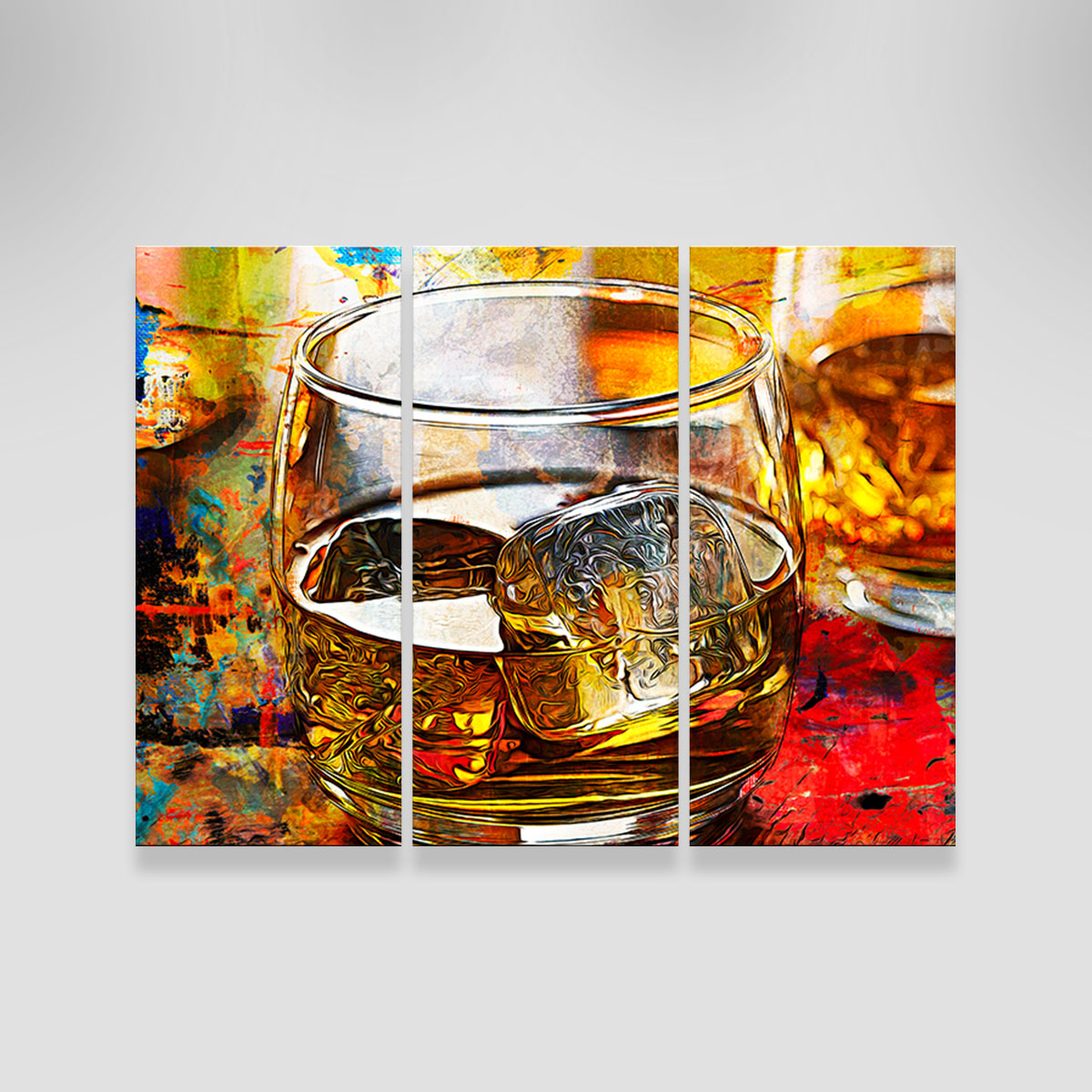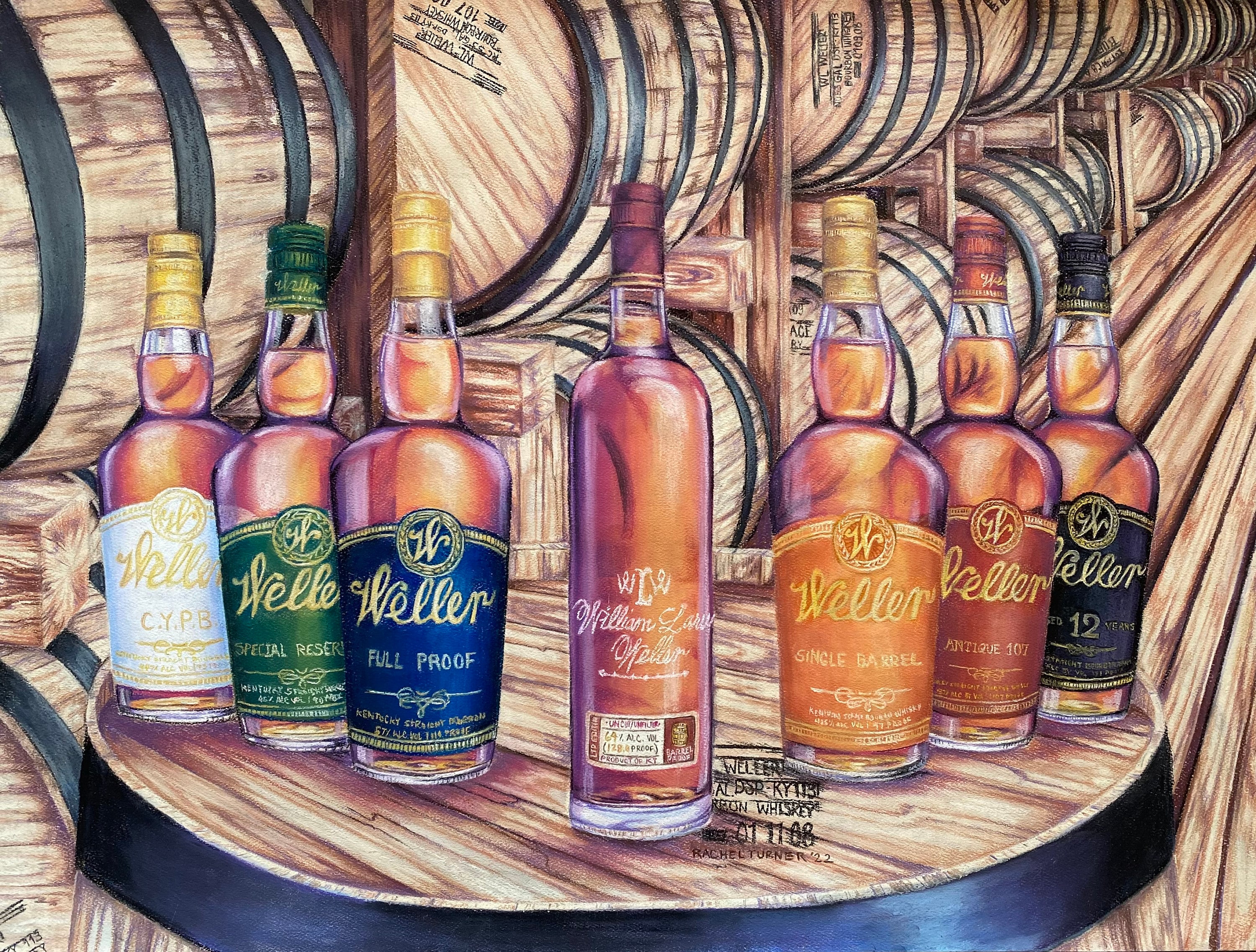Introducing the Elegance of Bourbon Art: A Homage to Craft Distillers
Introducing the Elegance of Bourbon Art: A Homage to Craft Distillers
Blog Article
The Value of Whiskey Art in Celebrating Heritage and Workmanship in the Beverage Industry
The detailed connection between bourbon art and the celebration of heritage and workmanship within the beverage sector can not be overstated. Through attentively designed containers and labels, scotch brands encapsulate their historic origins and the artisanal skills that specify their production techniques.
The Historical Roots of Whiskey
At the heart of whiskey's attraction lies an abundant tapestry of historical origins that trace back to ancient human beings. The origins of bourbon can be linked to the distillation techniques of the Sumerians and Babylonians around 2000 BCE, where early kinds of fermented grain beverages started to emerge. It was in the Middle Ages that the art of purification advanced significantly, especially in Ireland and Scotland, leading to the production of bourbon as we know it today.
The term "bourbon" itself stems from the Gaelic word "uisce beatha," indicating "water of life." This expression emphasizes the cultural importance of scotch in Celtic cultures, where it was usually related to rituals, events, and public bonding. By the 15th century, purification came to be a recognized craft within monastic communities, leading the way for the establishment of legal distilleries.
As trade courses expanded, scotch's popularity grew, transcending regional limits and catching the passion of connoisseurs worldwide. Realism Art. This historic trip shows not just the workmanship behind bourbon manufacturing yet also its essential role in social and social contexts, noting it as a substantial drink throughout background
Artistic Expression in Branding
Bourbon branding stands as a compelling crossway of creativity and commerce, where visual identification plays a crucial function fit customer assumption. The aesthetic appeals of whiskey tags, packaging, and marketing materials reflect not just the brand name's story but also its core worths and heritage. With creative expression, distilleries convey a story that reverberates with consumers, evoking feelings and stimulating connections.
Making use of color, typography, and images in branding serves to set apart products in a saturated market. As an example, standard motifs might evoke a sense of credibility and craftsmanship, while modern styles can signify technology and forward-thinking. This calculated artistic direction boosts brand acknowledgment and commitment, permitting consumers to create an individual relationship with the scotch they pick.
Moreover, creative expression in branding often acts as a party of local heritage. Distilleries regularly include local signs or historic references into their styles, developing a local color that invites consumers to take part in a broader cultural experience. Eventually, the virtuosity behind bourbon branding not just enhances visual charm however additionally improves the overall narrative of the brand, promoting a much deeper admiration for the workmanship and heritage ingrained in each container.
Craftsmanship in Bottle Layout
The artistry apparent in scotch branding prolongs past aesthetic identification to include the workmanship entailed in container layout. Each bottle serves as a vessel not just for the spirit within, however likewise for the story it tells about its origin, quality, and custom. The layout procedure calls for careful interest to detail, as components such as closure, product, and shape add substantially to the general perception of the scotch.
Workmanship in container layout includes selecting top quality glass that can enhance the bourbon's color and clarity, while additionally supplying a responsive experience for the customer. The silhouette of the container need to be both visually appealing and useful, commonly reflecting the heritage of the brand name. Many distilleries select one-of-a-kind forms or printed logo designs that stimulate a sense of authenticity and history.
Furthermore, the tag layout and typography play a crucial function in interacting the brand's narrative. Limited Edition. A well-crafted bottle not just mesmerizes the customer's eye however additionally strengthens the brand name's commitment to discover this info here top quality and tradition. By doing this, the craftsmanship of container design comes to be an important facet of the whiskey experience, merging virtuosity with a profound regard for heritage
Social Value of Whiskey Art
Commemorating tradition and craftsmanship, the social importance of scotch art goes beyond mere appearances, intertwining with the social and historic stories of the areas from which it stems. Each container acts as a canvas, showing the unique stories, mythology, and practices that have shaped neighborhood whiskey-making practices. The elaborate layouts usually show the heritage of the distillers, integrating signs and concepts that reverberate with the society and values of their neighborhoods.

Furthermore, scotch art plays an essential role in public gatherings and events, functioning as a tangible web link in between people and their shared experiences. By valuing the artistry in scotch product packaging, consumers cultivate a much deeper understanding and regard for the craft, ultimately enhancing their satisfaction of the beverage description itself.
Modern Trends in Scotch Presentation
Recently, the discussion of whiskey has progressed to mirror contemporary tastes and patterns while still recognizing typical craftsmanship - Whiskey Art. Distilleries are significantly concentrating on visual components that enhance the general alcohol consumption experience, connecting the space between heritage and modernity
Innovative bottle designs have actually this website arised, often integrating lasting products and artistic labels that tell compelling stories. Many brands now work together with regional musicians, infusing their products with special aesthetic expressions that resonate with consumers. Furthermore, limited-edition releases are often packaged in collectible containers, including worth and charm for lovers.

Conclusion
In final thought, bourbon art works as an important channel for revealing the heritage and workmanship integral in the drink industry. Through complex branding, cutting-edge container layouts, and culturally significant artistic elements, scotch brands efficiently honor their customs and link with customers. This creative story not just boosts the gratitude of whiskey however likewise strengthens neighborhood identification and pride among producers. Ultimately, whiskey art plays an important role in preserving and commemorating the rich social tapestry of whiskey-making.


Workmanship in container style involves picking top notch glass that can improve the bourbon's color and clarity, while additionally supplying a tactile experience for the customer. In this method, the craftsmanship of container style becomes an essential element of the whiskey experience, combining artistry with an extensive regard for heritage.
In final thought, bourbon art serves as a vital avenue for expressing the heritage and workmanship fundamental in the drink market.
Report this page